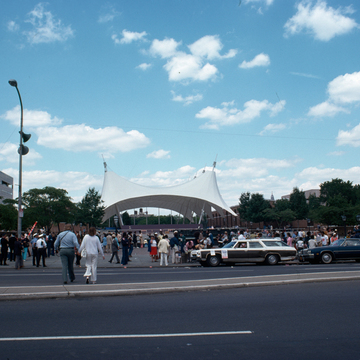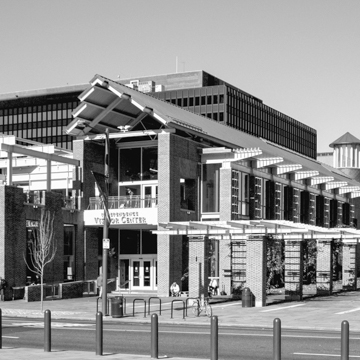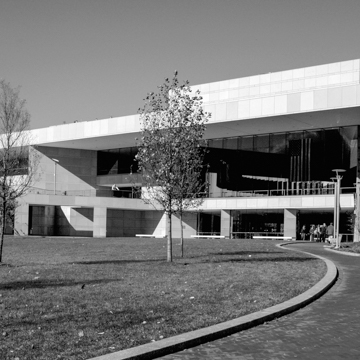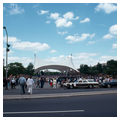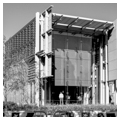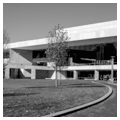The Pennsylvania State House, or Independence Hall group, forms the centerpiece of Independence National Historical Park. Together with the later city hall and Supreme Court, they make up the most important surviving architectural complex in the American colonies of the mid-eighteenth century, first as the seat of government of the Commonwealth of Pennsylvania and half a century
Today's Independence Mall had its origins in a Paul P. Cret scheme for a semicircle of columns facing Independence Hall (PH12.2) on the north side of Chestnut Street. After World War II, Philadelphia's city planner Edmund Bacon envisioned a larger space to “balance” the Benjamin Franklin Parkway (PH116) on the west side of City Hall (PH49)—though few ever experience the city as a balanced form except perhaps from an airplane. The mall was redesigned by Olin Partnership in 2004 with the intention of bringing life to the desert of Bacon's original plan by greening the east edge with trees and restaurant pavilions and by adding new interpretive buildings. Unfortunately, what are already in evidence—the bus terminal–like Visitors’ Center; Bohlin, Cywinski, Jackson's oddly industrialesque Liberty Bell Pavilion (2003) at S. 6th and Chestnut streets; and at the far end of the mall, the harsh, corporate, white limestone terminus of the Constitution Center (2000–2003) by Pei Cobb Freed and Partners, which repeats many of their favorite motifs at the National Gallery extension of thirty years earlier in Washington, D.C.—offer little hope for the future. During the course of the mall's redesign, it was discovered that the entrance to the Liberty Bell museum leading to the Liberty Bell Pavilion intruded on the site of Robert Morris's mansion, where President George Washington lived during his term, housing his slaves in the rear. Historian Edward Lawler's revisionist history (“The President's House in Philadelphia,” in the Pennsylvania Magazine of History and Biography [2002]) of the president's house spurred an extensive redesign of the complex by architects Kelly/Maiello to incorporate the larger story of slavery and its acceptance by the Revolutionary leaders.
The focus of the mall should be the humanly scaled buildings where Americans debated liberty and at the end of the eighteenth century governed their early republic.















